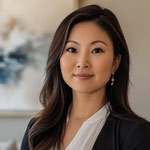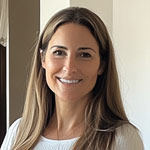Join our Professional Home Staging Certification Course
The Professional Course takes the average student just four weeks of part-time study to complete
- Six Units of Training with Lifetime Access
- Access to all Home Staging Forms, Templates & Contracts
- Quick and Easy Online Exam (99% pass rate)
- Certified Staging Expert™ Certification
- Trusted Training Provider Since 2007
- 100% Satisfaction Guarantee
- Last Updated: 21st April 2025
Ready to get started?
The Home Staging Certification trusted by thousands of Home Stagers & Realtors
















Here's What You'll Learn in our Professional Home Staging Course
Unit One - The Basics of Home Staging
- Discover the “deal breakers” that have no place in a staged home.
- Learn how to accentuate the positives and downplay the negatives of any house.
- We'll reveal how to trigger the key emotions buyers need to feel when looking at places.

Unit Two - Knowing What Changes to Make
- We let the cat out of the bag on #1 reason buyers actually invest into a home.
- Uncover the quick fixes that take minutes to do, but look like they took hours, to make a house beautiful.
- What is a vignette, why it’s important, and how to do one?

Unit Three - The Business of Home Staging
- The (simple) 8-step marketing process for creating a successful home staging business.
- Get guided as you put together a professional portfolio of “before and after shots”.
- The marketing do's and don'ts of networking with agents.

Unit Four - Fees and Client Meetings
- How to conduct a successful client meeting.
- Learn how much to charge for services.
- How to make good impressions with clients so you can “close them” easily.

Unit Five - More Home Staging Tips & Tricks
- Services you can offer as part of your home staging business.
- Four of the most common problems in a house and how to solve them.
- The list of home staging decorating do's and don’ts.

Unit Six - Frequently Asked Questions
- How to always be ready to meet your potential clients.
- How to price consultations, walkthroughs, and any other services you want to offer in your business.
- Learn the answer to the question, “Should I ever do my first staging for an agent for free?”

Plus Free Access to Our Resource Bundle

Nothing gives you a deeper understanding of home staging than getting access to a pack of resources used by actual home staging companies.
We’ve spend over 100 hours creating these over the years, so getting your hands on them today, for free, is an absolute no-brainer.
- Contract template
- Wholesale Vendor Lists
- Home Staging Checklist
- Home Staging To-Do List
- Agent Contact Form
- Business Mileage Form
- Home Report Form
Then You'll Take a Quick & Easy Online Exam

- 30 multi choice questions
- Short written answers analyzing online real estate listings
- Short written answers on home staging theory
- Submission of photos showcasing hands-on staging
- Two retries allowed
- No time limit
- 99% pass rate
Plus Earn Badges To Boost Your Marketing...



What Our Home Stagers Are Saying
(Updated April 2025)
We receive such a huge amount of positive testimonials and ‘thank you’ emails that we can’t publish them all here – but if you need more convincing this is the best home staging certification course available, then you can find more reviews here.
The Home Staging Institutes Advanced Staging Course was extremely helpful and informative, especially if you need guidance and are just starting out in the home staging business. They provide forms and checklists and of course step by step guidelines including how to stage, how to market and recommended insurance and business types.

I truly enjoyed taking this course. I actually found it calming, inspiring, smart, easy to follow, user friendly, truthful and familiar considering I work in short term vacation rentals and property management. There were also many other areas of starting up your own business which I was unfamiliar with such as certain technology pieces. The day we stop learning is the day we stop living. There are always so many tricks & tips to learn & I feel so much better equipped to go out there and birth a new business. I am obsessed with creating vignettes now! Thank you Home Staging Institute!

I thoroughly enjoyed my experience with the Home Staging Institute. The self-paced format made it easy to fit into my schedule, and the practical assignments offered valuable, hands-on experience. As a licensed real estate agent, I was able to immediately apply what I learned to help clients prepare their homes for sale and present them in the best possible light. I highly recommend this course to anyone looking to earn a home staging certification.

This course was great and easy to complete. I felt that the assignments got you involved and gave a hands-on approach to staging.

This course was great! I love that you can go at your own pace and it makes you think long and hard about what you're getting into with home staging. I appreciate the tips and knowledge this course has provided to me.

This course has been an incredible resource in building my confidence and skills as a home stager. It provided clear, practical guidance on everything from staging techniques to presenting myself professionally to clients. The exercises pushed me out of my comfort zone in the best way, helping me refine my approach and take actionable steps toward growing my business. I highly recommend it to anyone looking to elevate their home staging career!

This course has been a great tool for learning pretty much everything you need to know in the home staging business. I appreciate the amount of extra tools this course provides to feel more confident in new situations in the home staging industry

I wasn't sure if I would learn a lot from completing this certification, but I was wrong. I learned a lot and feel more confident in what I am capable of doing. Thank you!

Enrolling in the Home Staging Institute was a game-changer for my career. The course provided comprehensive, easy-to-follow training that gave me the confidence and expertise to launch my own staging business. The certification not only enhanced my credibility but also equipped me with industry insights that have helped me transform properties with greater impact. I highly recommend this program to anyone looking to break into home staging or refine their skills - it's an investment that truly pays off!

This course was absolutely wonderful! I practiced staging for friends and family over many years, but learning the business side and strategic planning to actually get a business started was invaluable. I could not have done this on my own. I am also grateful for the continued email support with this institution. Thank you for everything!

This was a great course from start to finish that really pushed me to think outside of my creative expertise to answer real questions facing a business owner, like marketing myself and how to handle pricing. The forms and downloads are also very useful as a new stager! Thank you!


This course is a complete guide to home staging. The content was clearly presented and easy to follow. I learned so much!

This course really highlighted some key points to consider when trying to create beautiful spaces. I never would have thought about pressure washing home exteriors but it definitely makes sense to do it.

Read enough testimonials?
This course was incredibly insightful and helped me gain a clear understanding of the home staging process from start to finish. It provided practical, real-world knowledge that I can immediately apply to my business, and I feel more confident in my ability to stage homes effectively and professionally.

This course was incredibly informative. I appreciate that it not only covered home staging but also the business side of the profession. Having ongoing access to the site is a huge benefit for us students as we continue to grow in our home staging careers. Thank you so much!

Home Staging Institute is the premiere online Home Staging Course. A great value, with the best industry know how. Perfect start for any level Home Stager that's looking to refresh, or needs top to bottom home staging knowledge to start their career.

The Home Staging Institute's course on home staging was a great value and exceeded my expectations. The content was comprehensive and easy to follow. It guides you from the basics of staging, to pricing your services, to setting up and marketing your business. I also appreciate that you have access to the course material after completing the program. I would highly recommend this course. You won't be disappointed!

I loved this class! It not only helped me get a firm understanding of what takes to be a professional home stager, it gave me the inspiration and motivation to redesign and redefine much of my own home. I have a totally new WOW factor when you walk through my front door!

This course has provided me a systematic approach to the staging process. I feel much more equipped to begin my business and confident that I can be successful with hard work and persistence.

This was an amazing course! Its all you need to start your home staging business.

I love the freedom of the course to be able to take the models and learn as in my convenience. The units were categorized well and broken down in sizable chunks for learning.

This course was easy to understand and logically progressed through the steps necessary to start your own staging business!

I began feeling so discouraged when I priced other certification courses that cost $1,000+ until I came across this home staging certification course. It's affordable and straightforward. Such a blessing!

This was an extremely informative and useful course. The price includes ongoing access to course material including a number of customizable checklists and forms that I can use for my own business. This was money and time well spent!

I thoroughly enjoyed this course.I read each unit twice,took notes(a must)and aced each quiz.Each unit was filled with tips,important info,and plenty of resources.The final exam really made me think about my goals and aspirations ,thank you all for helping me to move foward to that goal.

Read enough testimonials?
Completing my certification at the Home Staging Institute was a transformative experience that equipped me with the knowledge, skills, and confidence to excel in the home staging industry. The comprehensive curriculum, hands-on training, and expert guidance provided a solid foundation for creating stunning, market-ready spaces. Thanks to the Home Staging Institute, I am now able to deliver exceptional results for my clients and help their homes take center stage!

I fell into this by accident. My childhood home was built in 1967. My mother recently went into assisted living and we were tasked with getting the most possible. I staged it myself with what I thought would look good, and 5 different realtors wanted the card of the stager. I put a business plan together and open shop January 1st. This course was a gift. It literally goes over every aspect providing good solid advice and tons of forms.

I really enjoyed this course, and I am excited to get started!

This course is straightforward and easy to complete, more importantly is the support offered - any question or clarification on the material is responded to promptly!

I have wanted to become a home stager for quite some time, and I came across this course online when I was researching different courses to try and this one stuck out the most with its cost effectiveness and high ratings about the content quality. Now after finishing the course, I can honestly say that I learned so much and it has made me even more excited to enter my home staging journey!

This course is packed with practical tips and insights I could apply immediately
. I entered this course feeling unsure of my abilities, but I left with a newfound confidence in my staging skills. I now feel equipped to tackle any project and prepared to attract clients and grow my business!
I have really enjoyed the course!
The information was very valuable and helped me to better understand the home staging business. It also motivated me to move forward with my home staging business!
extremely comprehensive
. I learned a great deal and feel armed to engage in the work of home staging.
It is definitely worth the time and effort to complete this course
.
well paced class to help me begin my own home staging business
. All of the information was well formatted and easy to understand.
I felt that it gave me the confidence to get started and be successful
. I would highly recommend this course.
It was a lot of fun as well. I enjoyed it.

I absolutely loved this course
, it was straight forward and contained all the information a stager needs to start their business.
I'm so grateful to have found this course! It has been incredibly helpful in jumpstarting my new career as a home stager
.
It was awesome
. My favorite part were the assignments, they really got me to focus and think about all aspects of the business not just the pretty parts.
business development side of things a breeze
. Thank you!
Multiple sites highly recommended this course
. Compared with other companies online programs, this course was not commercialized. This course helped me take time to think about and lay out my staging business.
I'm so thrilled I found the Home Staging Institute! It was something very affordable as well
. I'm very pleased.
I am so glad that I chose to use Home Staging Institute for my home staging certification!
I purchased the package that came with templates and checklists that are so useful. They present all of the information you need in a clear and concise way that is easy to understand and take in. They have you do real life staging scenarios and practice, which is so helpful.I have learned so much from Home Staging Institute, and I suggest you get your certification from them as well!

It allowed me to take the course at my own pace. I really enjoyed the assignments.
From the time I begin taking the course I begin to pay attention to how spaces are furnished or staged and make mental notes of what I would do to accentuate the space or pull vision away from the negatives.This was a great course and I'm happy that I took it
.
After taking the course I am more confident now

Home Staging Institute kept showing up as the number one home staging course online!
. So happy with the results of this course!
I absolutely loved this course
. I have been in property management for the past 4 years and have staged homes as a "side gig" for the past 2. I went into this course pretty confident that I wouldn't learn much and just wanted my certification to add to my website.I was pleasantly surprised that I have finished this course with pages of notes with new information to walk away with and apply to my future projects
.
This course has been a wonderful experience!
I loved being able to work at my own pace. Having that flexibility was amazing. The course had great content and outstanding resources.I would recommend this course to everyone!

interesting and full of information
. I learned so much through each course and made me more interested on what I want to do.I am grateful for everything that I have learned
and hopefully use in the future.
it was highly recommended by others
. I enjoyed taking the course and it was easy to follow and understand. I will recommend this course to other new Home Stagers. Thank you
realized you have a good standing reputation
and I can go at my own pace
I have been super successful and put each and everything I learned in the course content to use
. Thank you!



so very happy I chose yours
. There is a sincere quality with yours in truly desiring a person to succeed. I'm enjoying every minute of it!
I will recommend your course to friends
. Thanks again for the great course.
I am so excited
, you have no idea! Thank you so much for this course, it is great.


* These are real testimonials from recent Home Staging Institute customers. Where a profile photo wasn’t supplied with the testimonial, we have opted to use a placeholder.
Professional Home Staging Course Summary
Who it’s aimed at
People who would like to offer their home staging services professionally, and would like their home staging certification to prove there has been education and training undertaken.
Typical student
Anyone with an interest in interior design would like 5-7 clients per month.
Length of course
Roughly twenty hours worth of reading, the Professional course takes the average student four weeks of part time study to complete.
Cost
$247 One-off payment.
(or three monthly payments of $86)
How Our Certification Course Works
Enroll & Get Instant Access
- Sign up anytime - start immediately
- Choose one-time or monthly payment
- Lifetime access, no deadlines
Learn & Build Your Portfolio
- Complete short lessons and complete quizzes
- Apply what you learn with real-world assignments
- Get support from our expert team
Certify & Launch Your Career
- Take the exam when you're ready
- Earn your Certified Staging Expert™ diploma
- Use it to win clients and stand out online

Let's Get Your Instant Access, Risk Free.


Payment Plans Available





